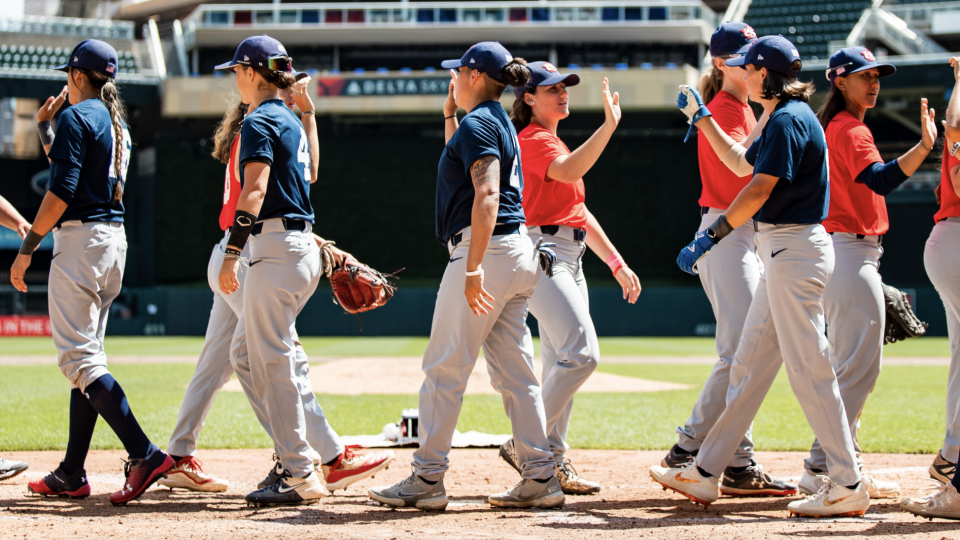A healthy team culture is as important in the sports world as it is in the corporate world. So, let’s start with an understanding of what a team culture is and why it matters.
A culture is the compilation of a team's values, attitudes, and beliefs about sports and competition. It determines, for example, what the team focuses on, and how individual accomplishment and team success are looked at. The culture is grounded in an identified sense of mission and shared goals.
The culture of a team, whether healthy or unhealthy, has an impact on its individual athletes. Such as, a team in constant conflict will have a poor team culture and bring the athletes and coaches down resulting in unpleasant outcomes and potentially hurting individual athletes' performances. Conversely, a team culture built on positive energy, support, and fun will lift everyone up, and make them feel comfortable and supportive, and the results will show it.
All these qualities of culture have real implications for how the team functions, how its members get along, and how the athletes perform and the results they achieve. When a team has a defined culture understood by all its members, they feel an implicit pressure (in the good sense) to support that culture.
How a Team's Culture Develops
Coaches can allow the culture of their team to develop in different ways. It can emerge naturally as an expression of their athletes, and the benefit to this organic approach is that team members feel a sense of ownership for the culture because they created it. With this, there can be a risk that the team be unfairly shaped by one or few particularly assertive team members, leaving others feeling marginalized or powerless. Real conflict can arise when the team culture is hijacked by a small subset of the team who are more interested in exerting their own power over the team, however unhealthy it might be.
Another approach, and the one most often recommended, is for coaches to take an active (though not dominating) role in the creation of a team culture. Through leadership and open discussions with athletes, the team can identify the values, attitudes, and beliefs both coach and athlete want to be the foundation of the team culture. Coaches can also discuss what collectively is important in terms of the atmosphere to be created, the expectations the team has about behavior, and the way in which team members communicate. This collaborative approach to team culture can ensure that members feel a sense of ownership for the culture and, as a result, are more likely to embrace it both on and off the field.
It’s important for the head coach to sit down with the rest of the coaching staff and athletes to discuss the kind of culture their team wants to have.
Some questions you may want to ask:
- What values do we want to act as the foundation for the team culture?
- What attitudes and beliefs about the game of baseball, competition, and team do you want to hold?
- What are the goals the team wants to pursue?
How do the athletes and coaches want to treat each other? - What kind of atmosphere do we want on the team?
When these questions are asked, the coach is proactively developing a team culture of their own design rather than leaving it to chance. This way, a team is being built that has its best chance of being positive and supportive and, as a result, performing at the highest level possible.
Tools for Building Team Culture
There are also some specific things you can do to actively develop and foster a healthy team culture.
Be explicit in defining your team’s values, attitudes, and goals (and write them down!)
Identify and enlist team leaders to support the team culture.
Provide opportunities to build team culture.
Create shared responsibilities to provide an opportunity for athletes to work together.
Create team rituals such a pre-competition dinners or after-event cool-downs.
Schedule weekly check-ins to get feedback about how things are going.
Recognize teachable moments and use them to encourage your team culture.
Cornerstones of Building a Positive Team Culture
Make Safety a Priority
An athlete’s well-being should always be the top priority for a youth sports club. Teams need to ensure athletes are taking care of themselves and performing skills development in a safe manner. Athletes should use the proper equipment and be reminded about safety regularly. Instilling that athletes prioritize their own and others’ safety will create a culture of health and support. It will also teach athletes from a young age how to play the sport safely- knowledge they will continue to need as they get older.
Focus on Fun
Young athletes don’t begin playing a sport or join a team just to experience success. Young athletes want to have fun. If a player isn’t enjoying themselves, it can become a chore for parents to get their child to practice or go to games. If a young athlete isn’t having fun, it’s unlikely they will spend any extra time trying to learn new skills or make significant improvements on whatever it is they’re doing. Eventually, this can cause them to not want to play at all. Feeling pressure to perform at a high level for coaches and parents can lead to burnout. Often, young athletes want to be able to play with their friends, learn new skills, and not have to worry solely about the pressure to win.
Provide Equal Opportunity for Personal Development
Young athletes are still developing overall athleticism and skill. The focus at this level should be learning the game and enhancing the players’ abilities. Clubs should make practice and clinics more of a priority than game results. Kids need to participate in games to develop in-game tactics, but the focus should be using the real-game situations as teaching opportunities rather than the outcome.
Experiencing a loss can benefit teams. Losing is an important opportunity for personal development, so instead of making athletes afraid of suffering defeat, coaches should teach their members to embrace it and learn how to cope with loss. Handling themselves in both victory and defeat is an important way coaches to model this cultural practice. The team will learn a lot seeing how their coaches or parents handle losing.
Make Rules for Parents
Unfortunately, even if coaches and players work to create a positive team culture, players’ parents can interfere with a positive culture. It’s important for clubs to establish rules for parents. It should include how they should conduct themselves during games and practices, how they treat players (their child and other team members), how they address coaches, and how they interact with opposing teams. Setting these up in advance of a season can help eliminate in-season issues.
Set Aside Time for Social Development
While teams like to think athletes join a club only for the athletic opportunities, young players also want to make friends and socialize. For kids, spending time with friends is important. Socializing and building bonds with teammates is an important part of development, so teams should include opportunities for young athletes to have fun with their friends. While practice and games should be focused on skills development, teams can make team bonding and learning to work together a priority for the season.
Be A Role Model
The way your team players treat each other is a reflection of your team culture and your attitude towards the players. You’re not just a coach, but a teacher for the kids as well, and being a good coach ultimately means you’re a great teacher. A coach prepares players not just for the game, but beyond that as well. Whatever you teach them will stay with them forever and will have an impact on their lives even after their sports career has ended. By not focusing only on the athlete, but on the whole person, you will be able to help the kids make full use of their inherent capacity.
Create a Diverse, Equitable, and Inclusive Environment
Developing a sense of equality is essential for a stronger team, organization, and system. When we can accept and embrace differences in culture and characteristics of others, we create an environment for all individuals to feel safe and secure.
A baseball diamond should always be a welcoming place for everyone. Kids should look forward to going to practice just as much as playing in games. If everyone feels like they have a place on the team, you’re likely to see more engagement, a greater sense of belonging, increased performance, improved reputation, decreased burnout, and finally, better outcomes.
A positive team culture can help better develop athletes’ skills and appreciation of all the game of baseball has to offer. It also provides a deep appreciation of all those who give so generously their time. And THIS is why culture matters!
https://www.psychologytoday.com/us/blog/the-power-prime/201609/build-team-culture-athletic-success
https://teamgenius.com/pillars-of-building-a-positive-youth-sports-club-culture/
https://rockytopsportsworld.com/blog/tips-for-creating-positive-culture-for-youth-sports-team/
https://www.nationalsportsid.com/positive-youth-sports-culture/


